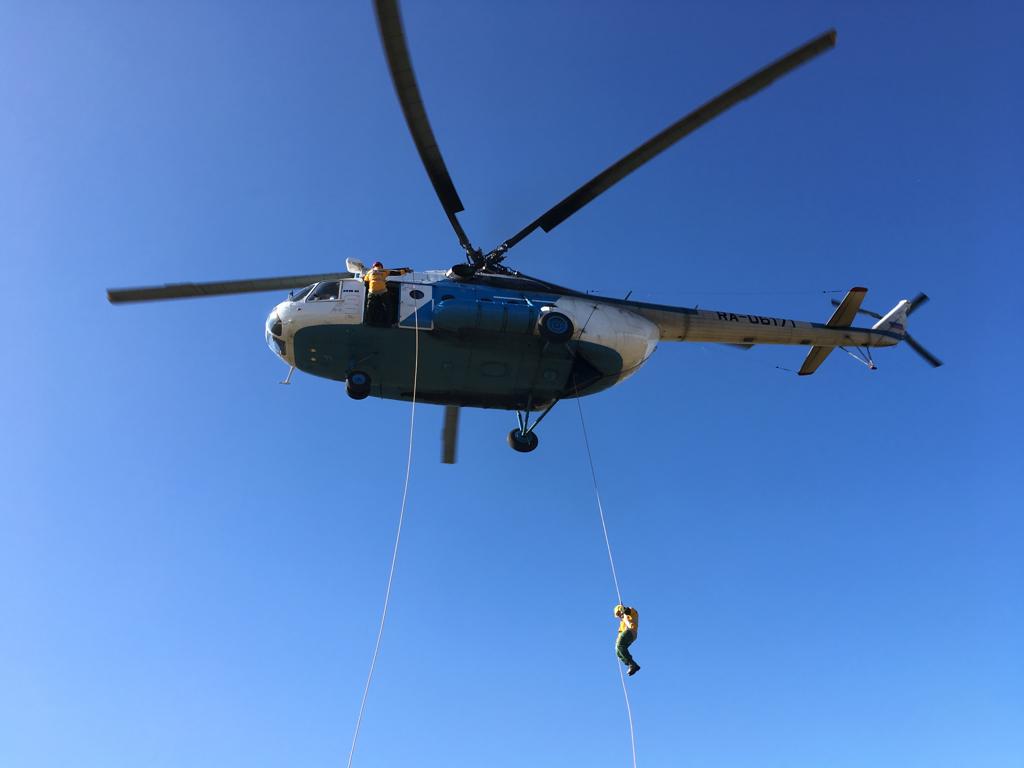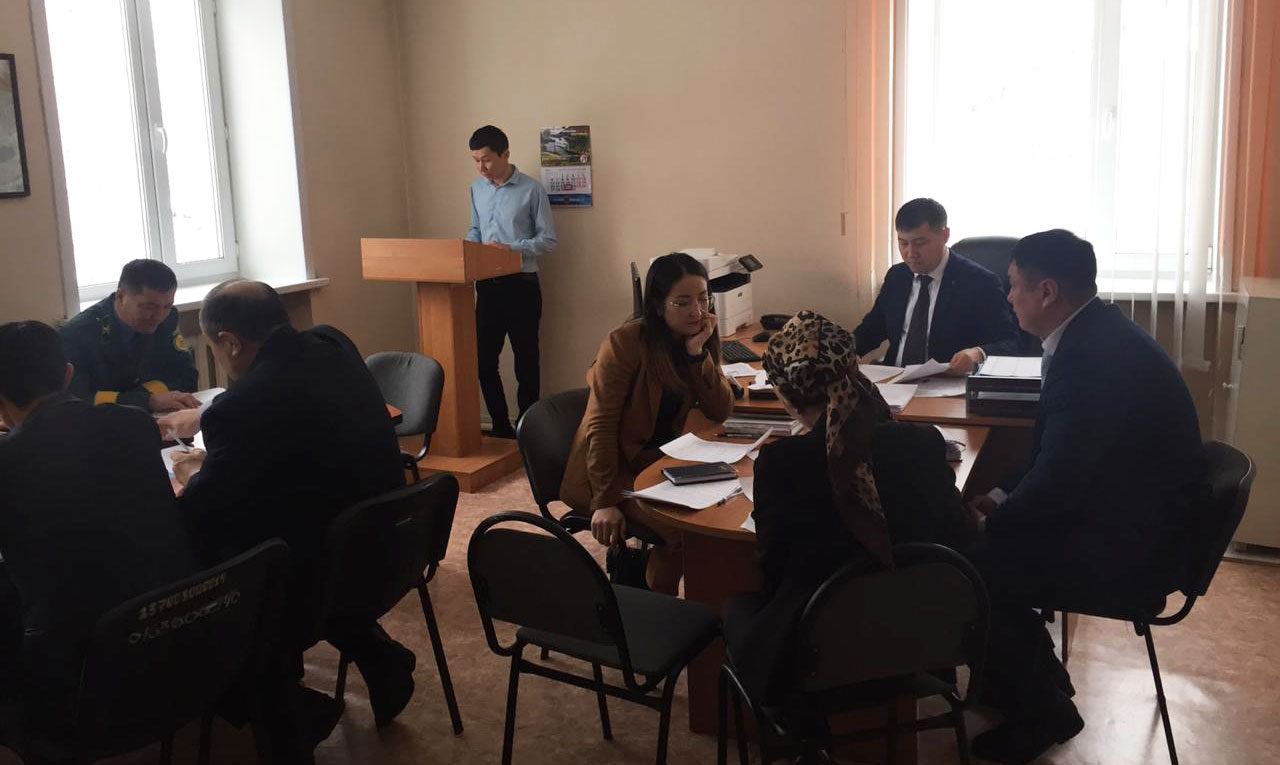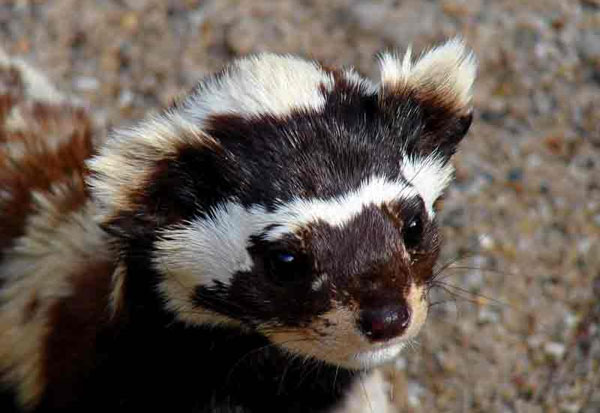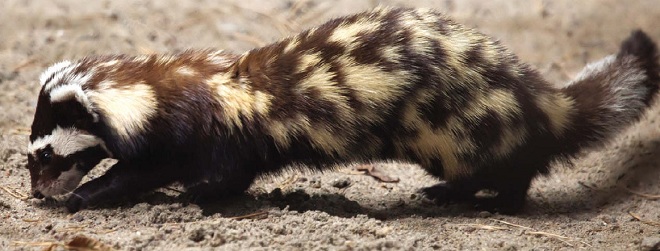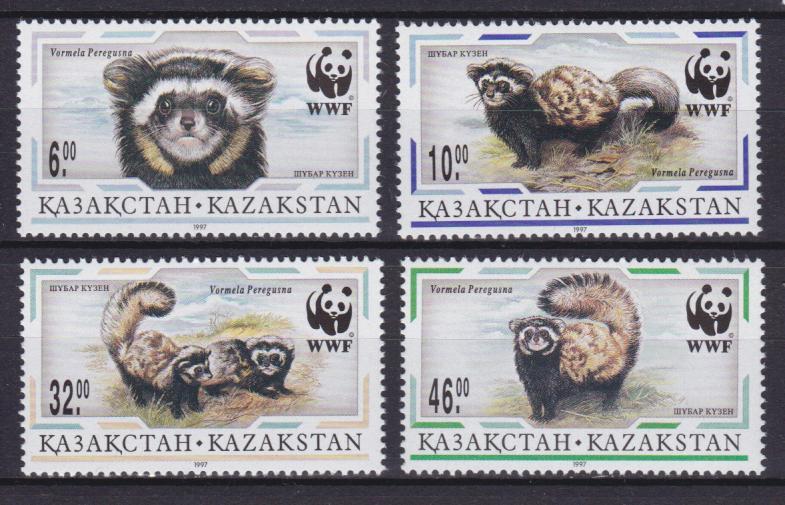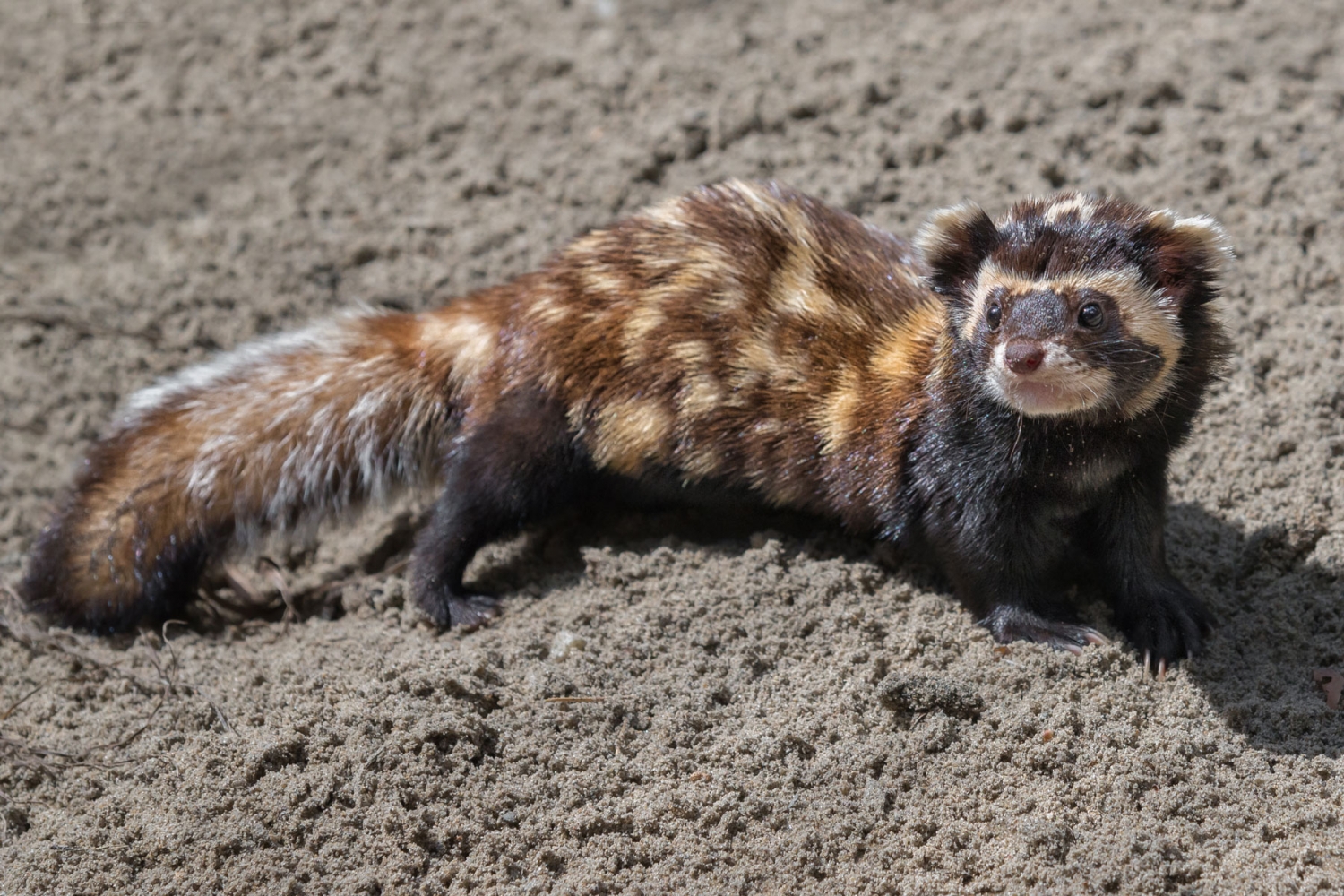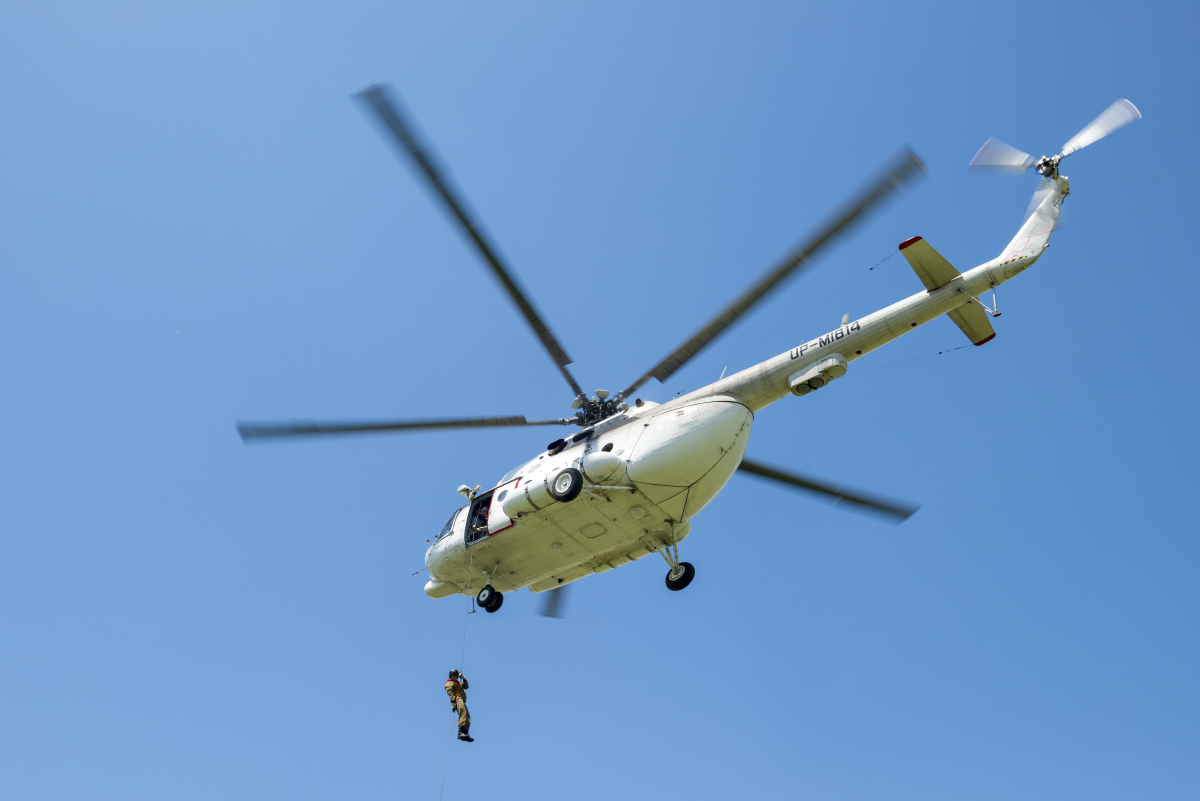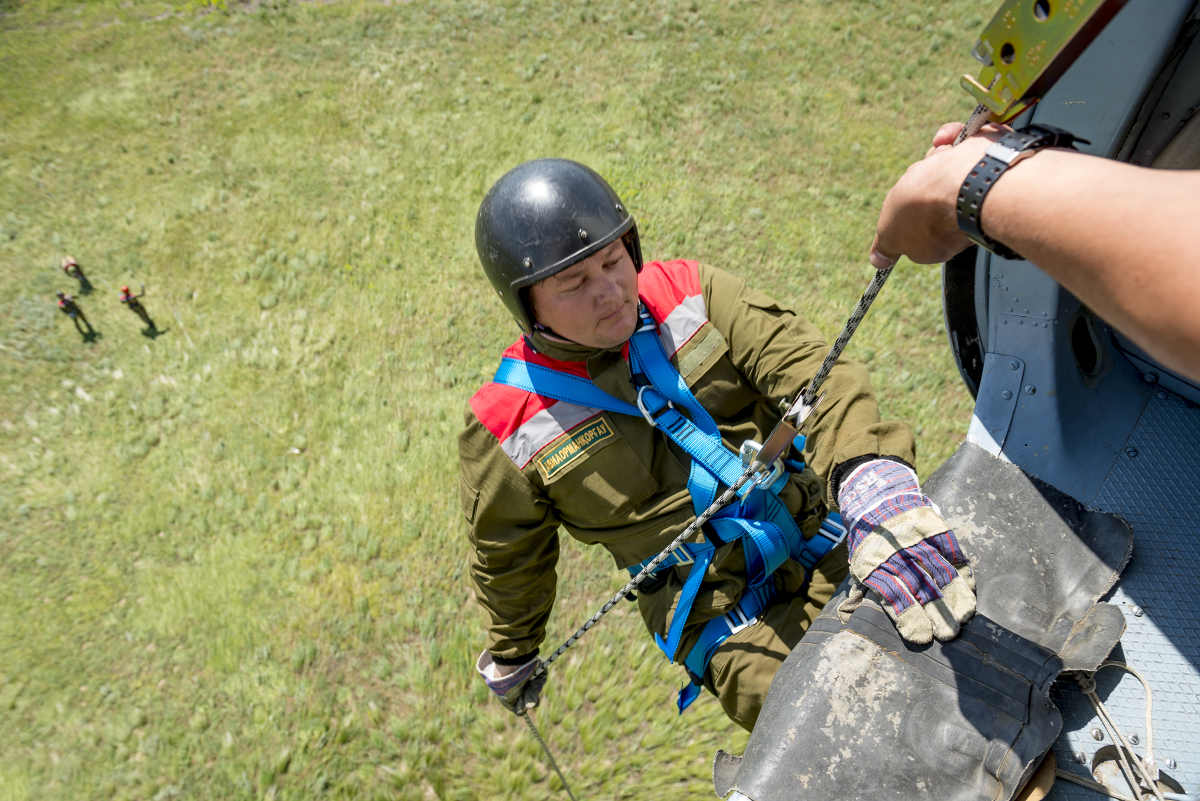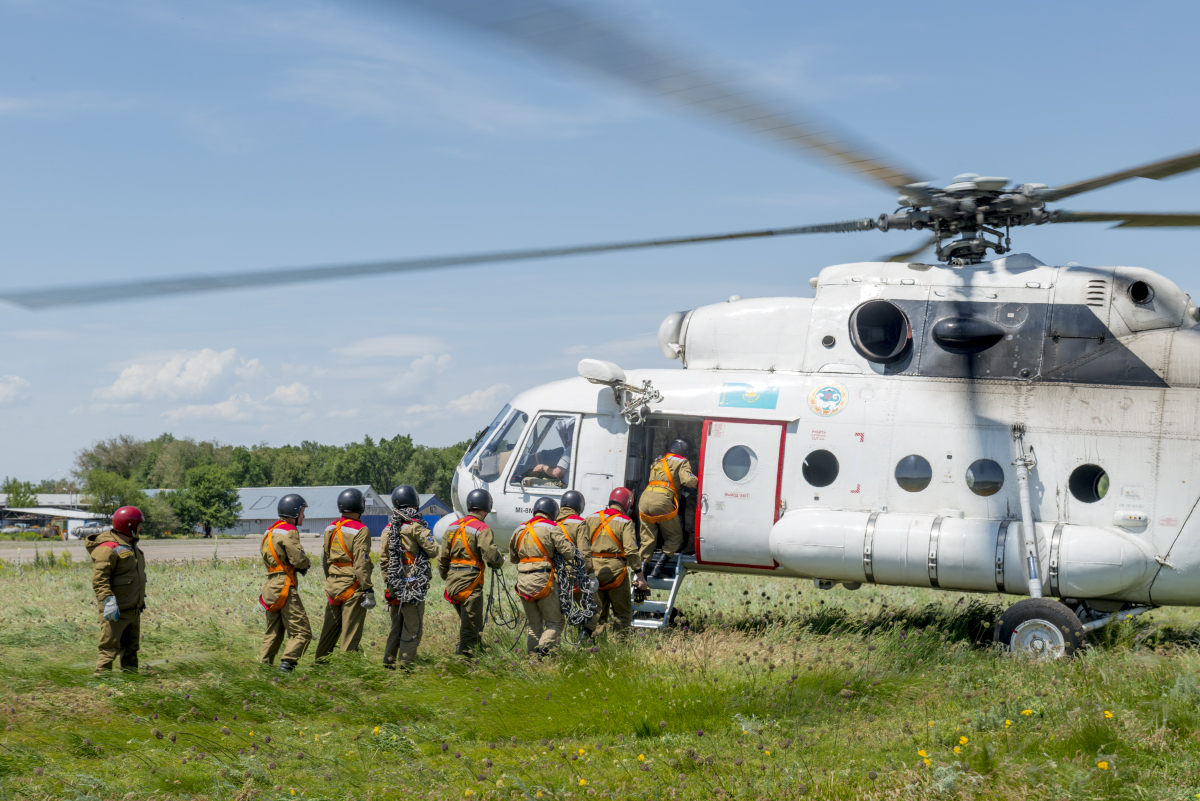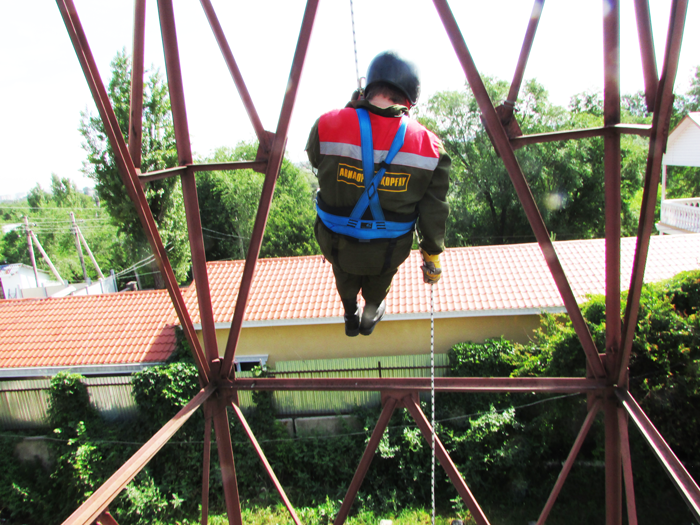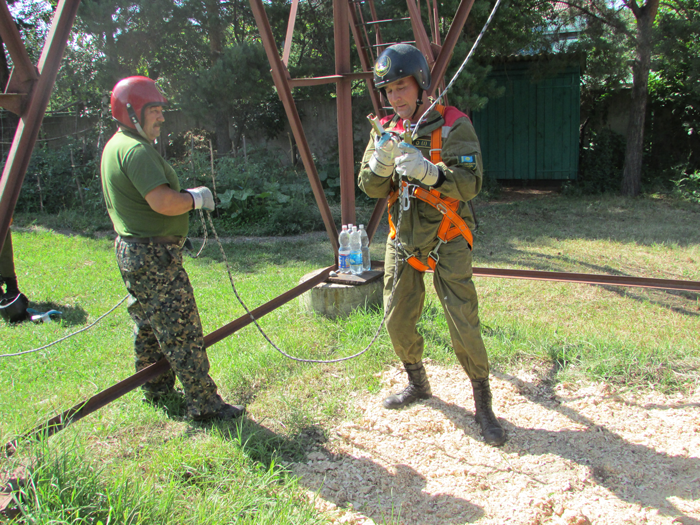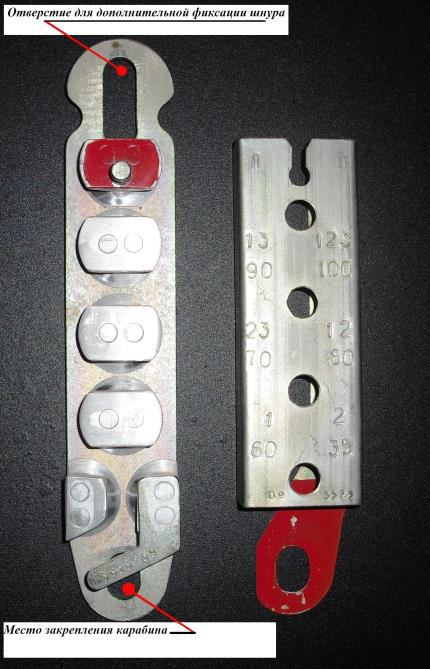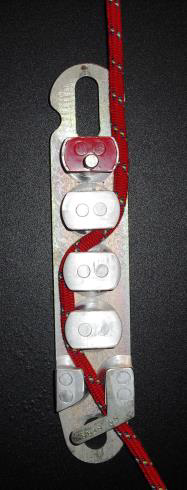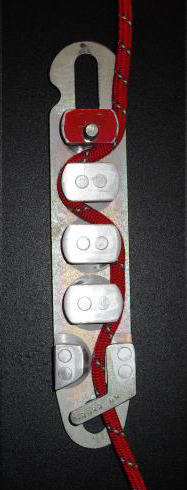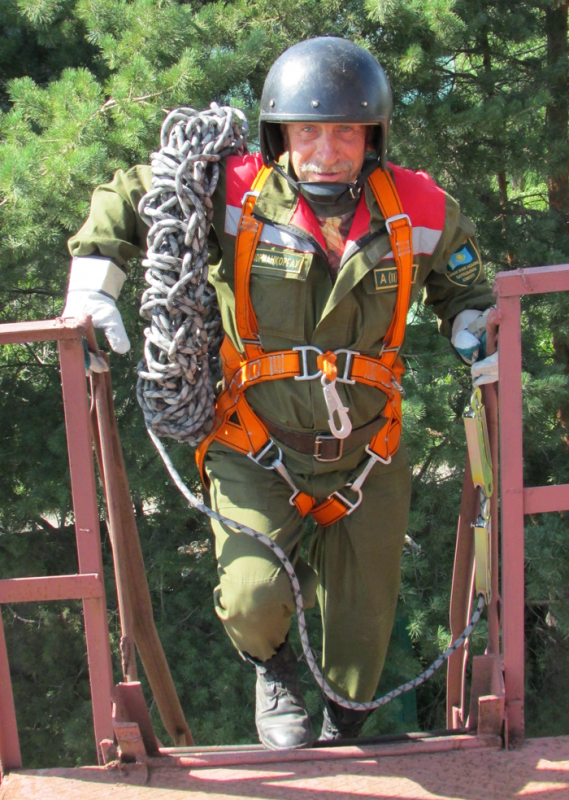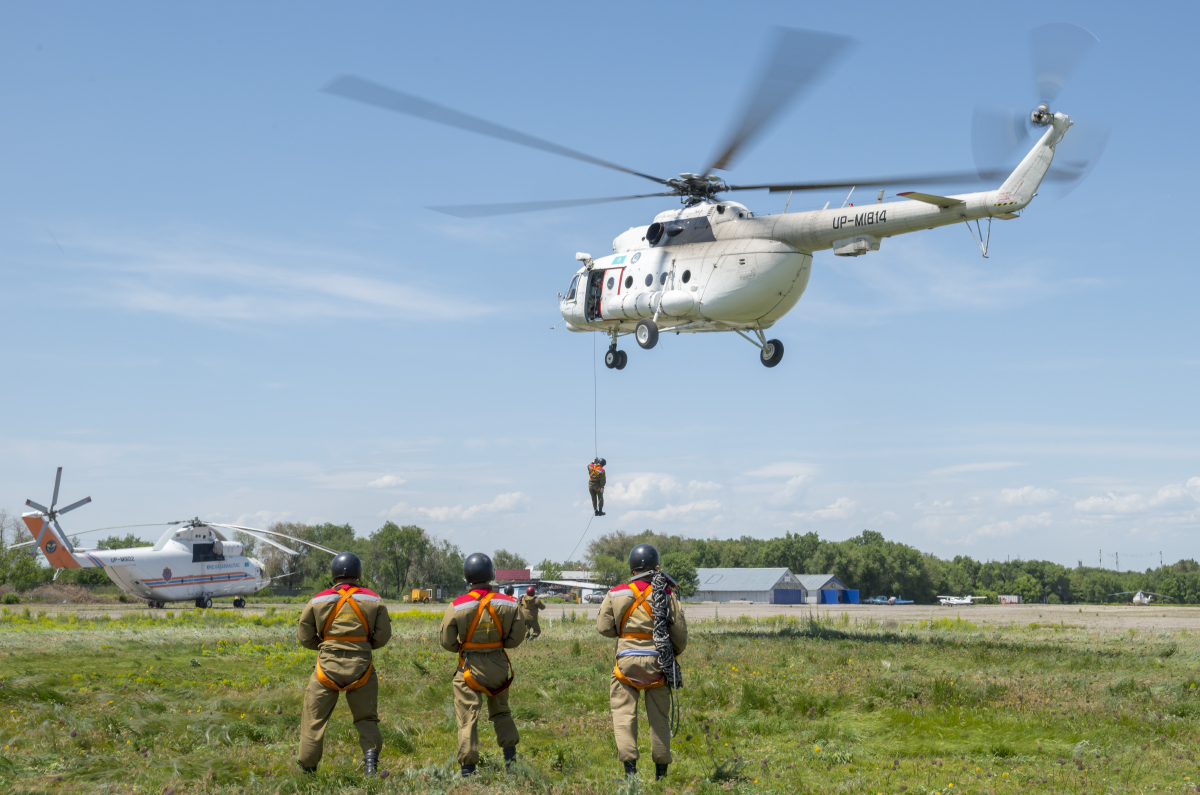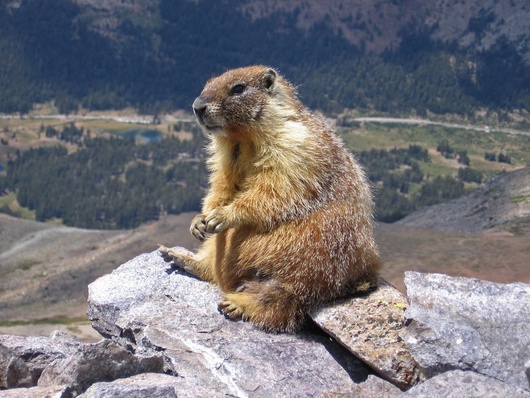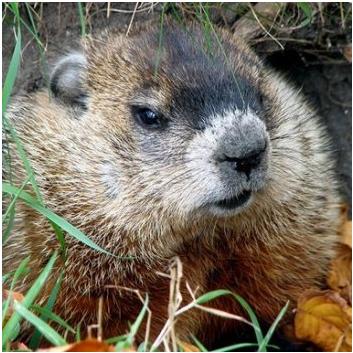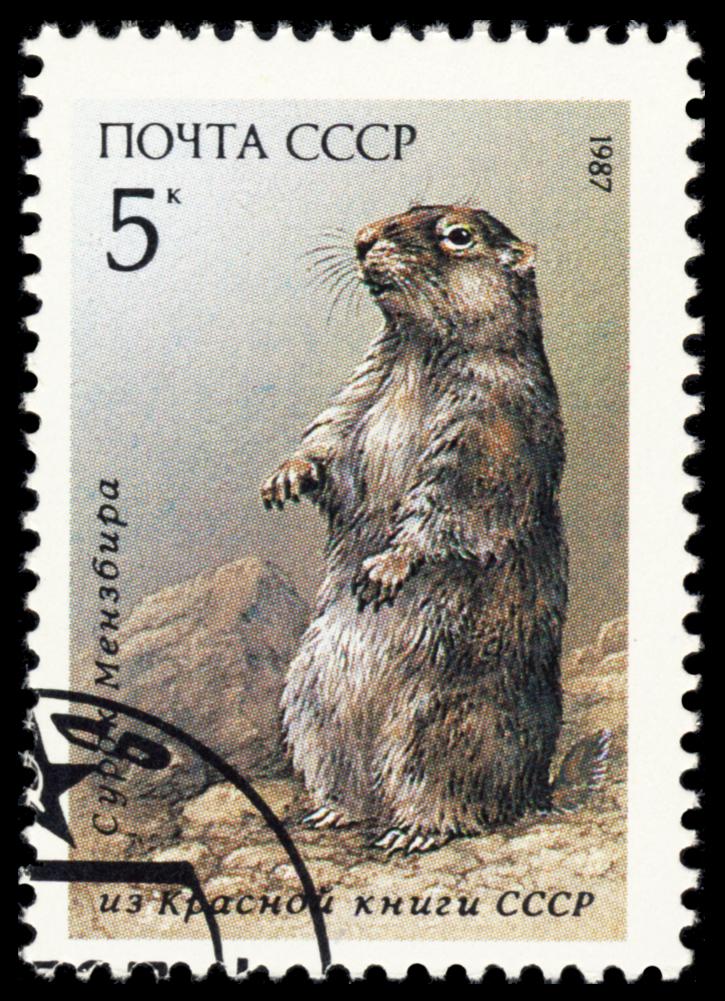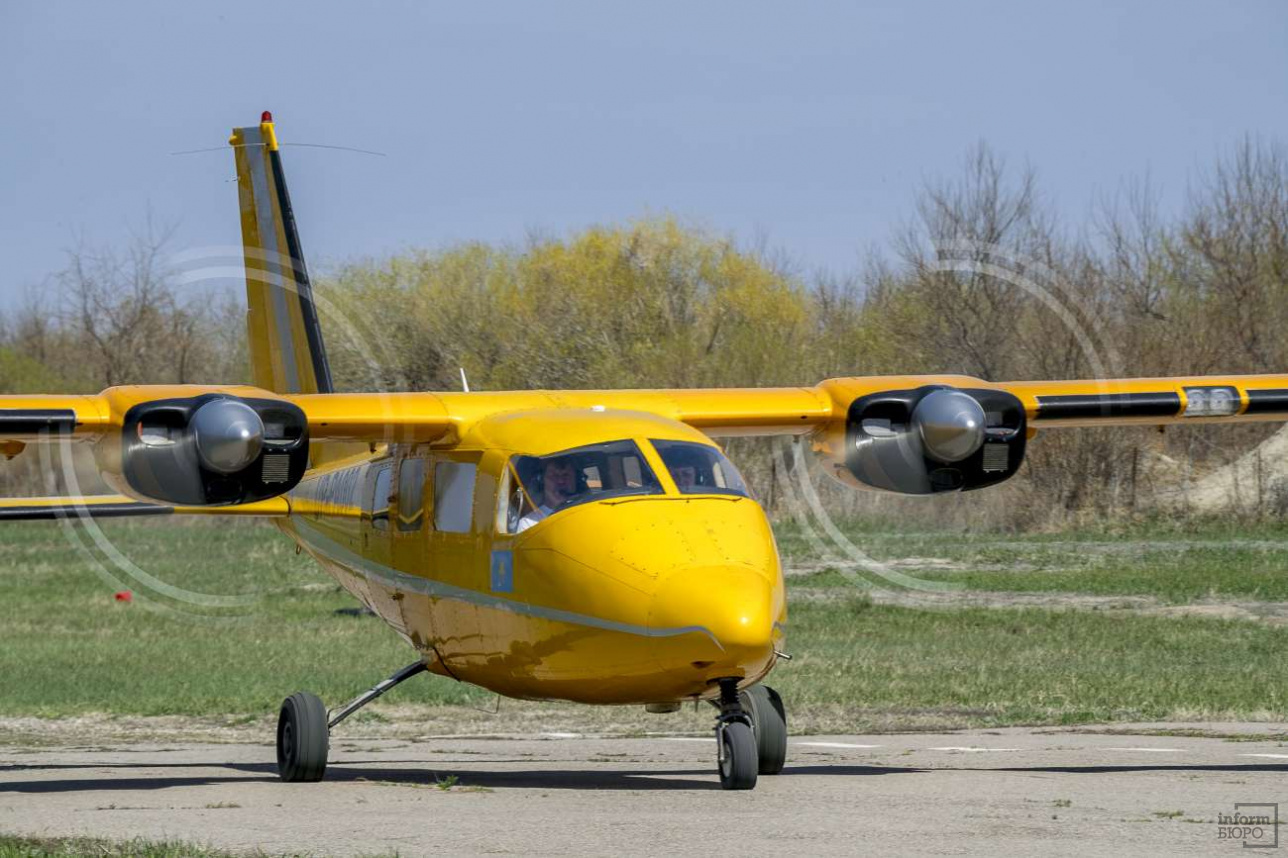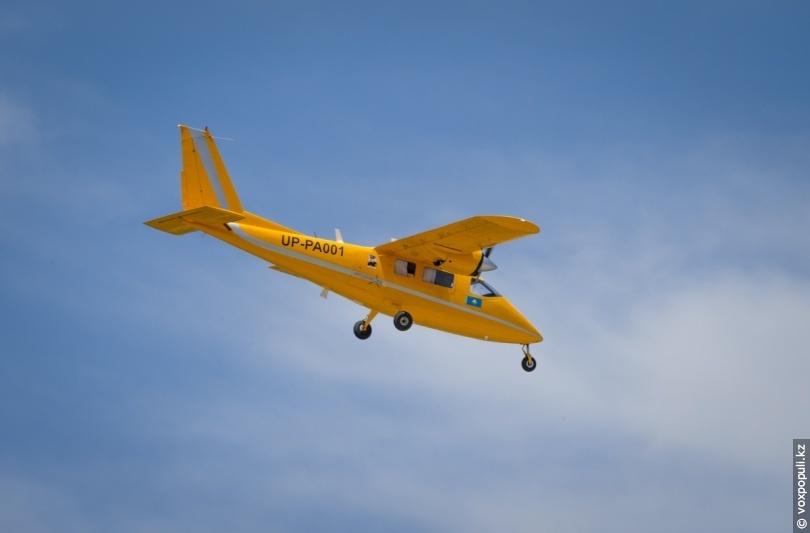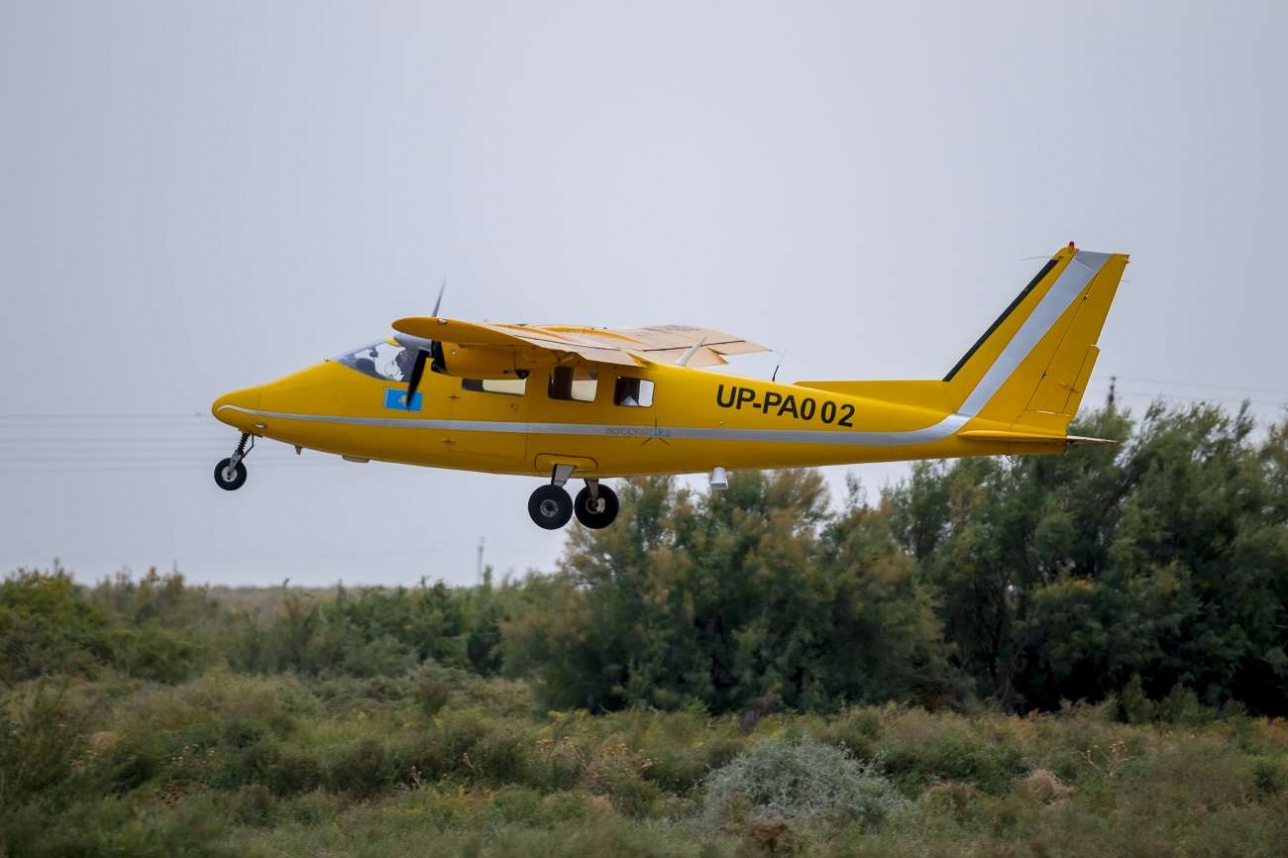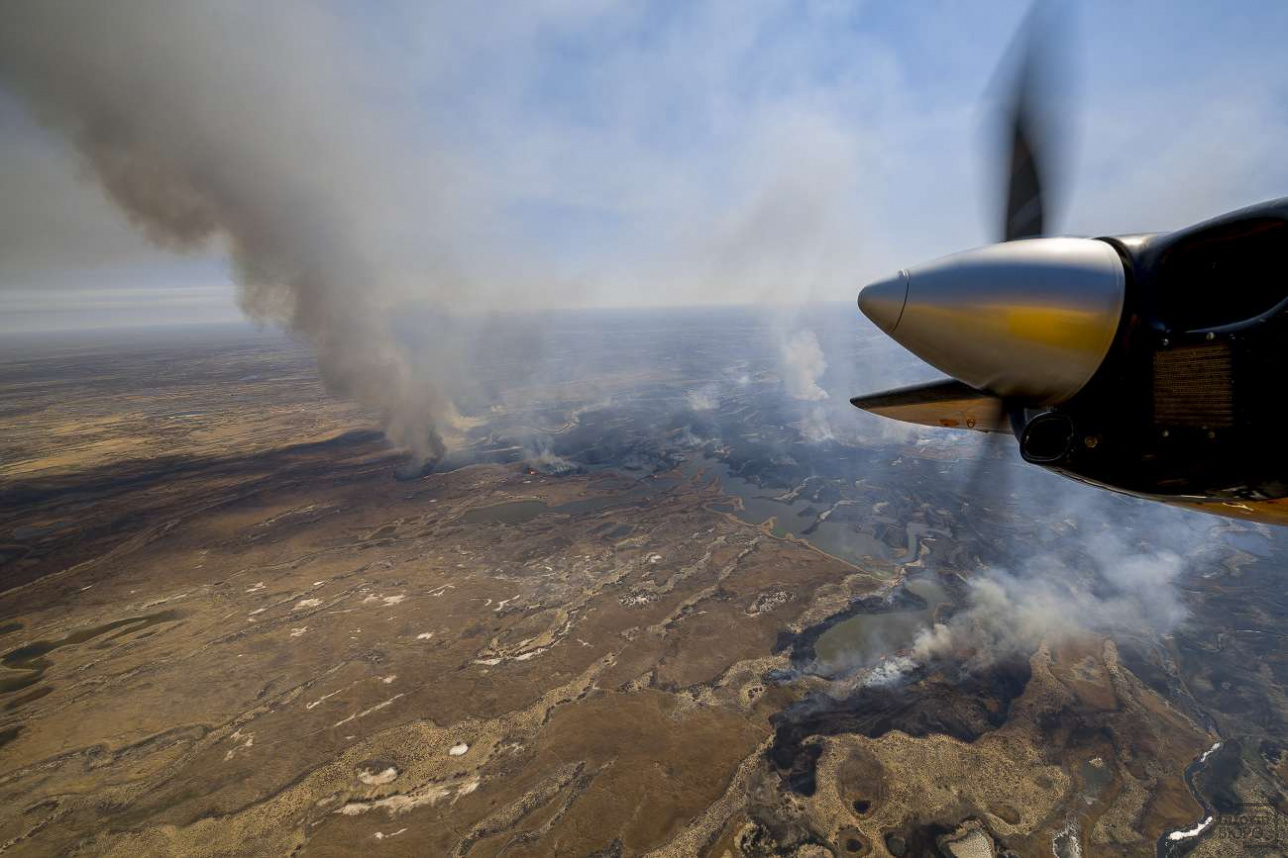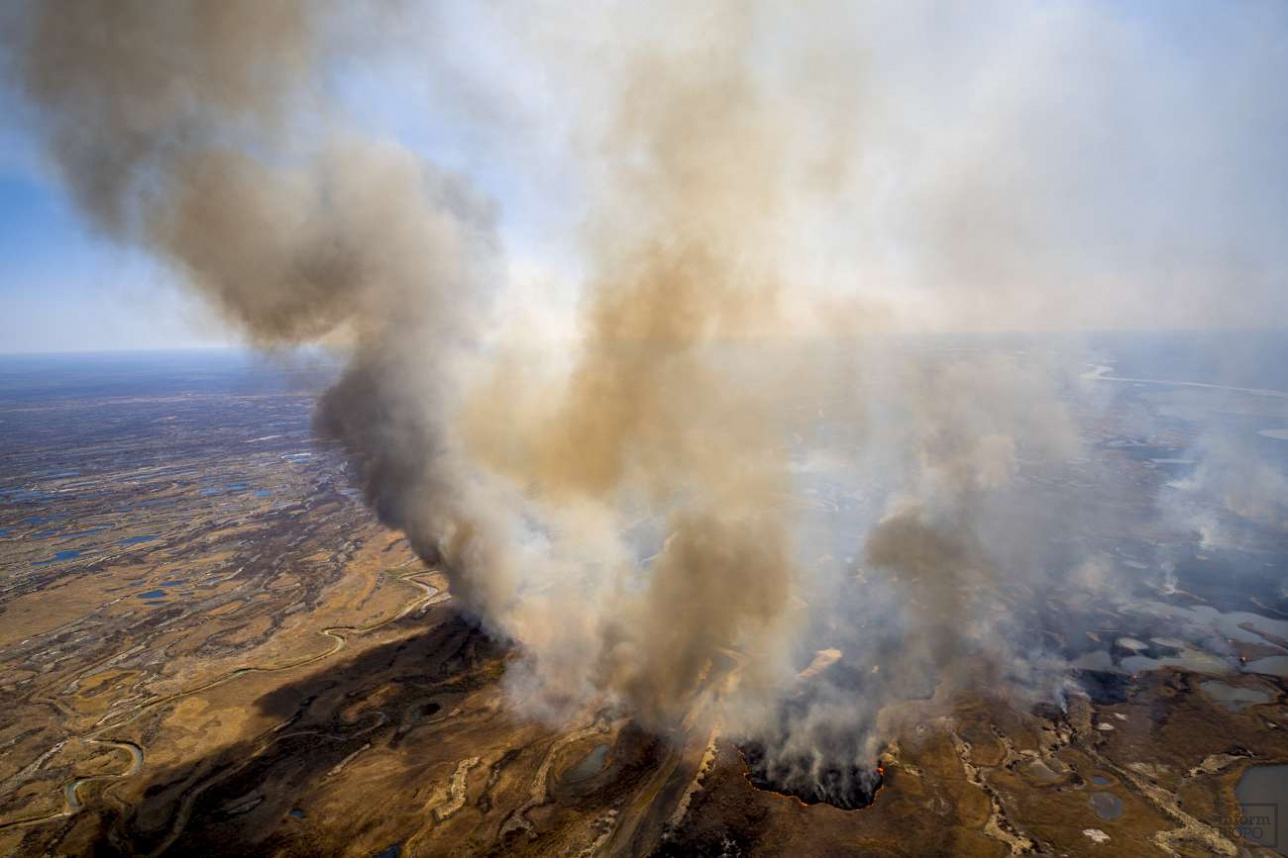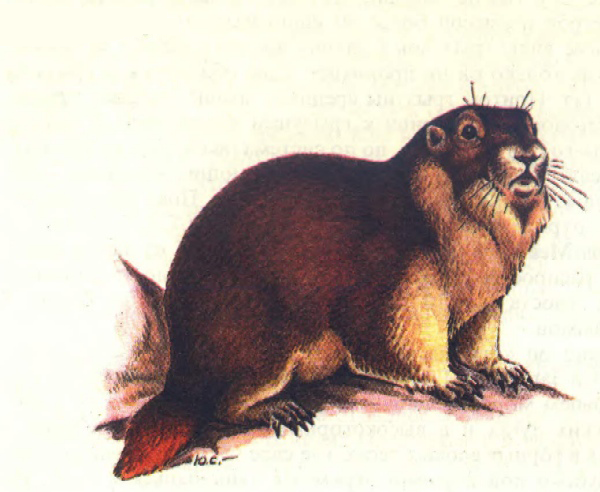
Groundhog MenzbierThe marmot of Menzbir is an endemic of the Western Tien Shan, which has a very small range and low total number. The smallest of the Palaearctic marmots. Distributed only in the north-eastern third of the Karzhantau mountains and on the adjacent slope of the Ugam ridge (typical, or Ugam subspecies), as well as in the southwestern quarter of Chatkal and on the adjacent northeastern part of the Kuraminsky ranges (Chatkal subspecies). The area of the Ugamsk groundhog is located entirely in the Shymkent region of Kazakhstan, and Chatkal groundhog is mainly located in Uzbekistan and only slightly enters Kyrgyzstan and Tajikistan. In Kazakhstan, the Menzbir marmot lives only in the subalpine and alpine zones of mountains at an altitude of 2100–3300 m above sea level. m. In the lower zone, where it is relatively warm, and the vegetation dries out quite early in the summer, it inhabits mainly the northern and north-eastern most snowy slopes.
Groundhog settlements here are confined either to snowfields, or to places where spring water emerges - sazas, where plants remain green until late autumn. In the upper zone (over 2900 m) there is a lot of precipitation in the form of snow, and the northern slopes even in mid-June are very snowy. Therefore, the groundhog settles here mainly on the less snowy southern and southwestern slopes, more sun-warmed, where thawed patches and green fodder appear earlier, and the soil dries better. The gentle slopes of the mountains with well-defined mesorelief are most favorable for the groundhog. Here, sufficient depth of the fine earth layer for the construction of burrows, more mosaic vegetation is the basis of good nutrition of animals. Such places are more common on glacial moraines, which are almost always inhabited by marmots.
Appearance
The length of the body is 40-50 cm, the tail is 8.5-13 cm. Regarding the length of the body, the tail takes an average of 22%. Weight 1850–3400 g in May and 3450–4080 g in August. The color of the top of the head, back and sides is dark brown, sometimes almost black, sharply delimited from the ocher-yellowish sides of the neck and head. The belly and paws are reddish-buffy, the tail is dark brown, but in the case of incomplete molting, it is yellow or even mottled from mixing these tones. In summer, during molting, dark tones, fading, become light brown and yellowish-rust, and the color is generally less characteristic. It differs from other marmots in the Tien Shan by its short tail, and at the end of summer it has a very dark coloration of the back, head and neck, sharply delimited from the light lateral parts of the head and neck, as well as a characteristic long-mournful (like a buzzard) cry "covered”.
Behavior and Nutrition
In the upper river. Badam at a height of up to 2600 m in the spring marmots eat most of the leaves of bluegrass, goose, goose onion, Regel's eremurus, as well as in a small amount of bluegrass and bluegrass root. In the upper zone (over 2900 m) of the river basin. Sayram groundhog main food before the appearance of greenery - roots of the common prostrate, and later - its leaves. In addition, the leaves of the ranunculus buttercup, Fedchenko onion, Lygotis Korolkov and some other plants are eaten. In summer, food is more diverse. In the lower habitat zone, the animals eat a lot of leaves and flowers of finely divided ferula, prangos, eremurus Regel, rhubarb Maximovich, Korolkovia Severtsov, melissitus Popov and some others. In the upper zone, in the river basin. Sairam, where the vegetation is the most mesophilic, is based on alpine dandelion, Fedchenko onions, meadow foxtail, prostrate open-backed fish and Rhodiola Kirillova.
Of great importance in the middle and lower belts of the marmot habitat is the long-growing vegetation of slaughterhouses, which groundhogs, like the marmot, feed before hibernation. In spring and early summer, the groundhog often eats animal feed (shellfish, insects, worms). Thirst quenches with moisture contained in plants, although in the spring there is occasionally eating snow.
A groundhog is a settled animal, although it is characterized by small seasonal movements due to the nature of the distribution and melting of the snow cover. Frequent anxiety caused by dogs, people accompanying flocks of sheep cause eviction of marmots. However, the animals usually move no further than 300-400 m and, at the end of summer, after the migration of the sheep, they return to their former places.
In early spring, leaves after hibernation, breaking through a high (1-3 m) snow cover. On slopes up to 2600 m above sea level m. groundhogs in mass appear in late March - early April, higher - in the second decade of April and at an altitude of more than 2900 m - in late April - early May. The first one and a half weeks after hibernation leave the burrows for about 10 hours and disappear more often at 12-13 hours. With the appearance of thawed patches they run to them 100-150 m from their burrows. In inclement weather, wind and snow completely stop activity.
In summer (at an altitude of up to 2600 m from the third decade of May to the end of July), marmots in the mass emerge from the burrows for about 6 hours and leave in them at about 21 hours, making them in the hottest time (from 10-11 to 15-16 hours) break while resting in shelters or in the shade of rocks. In August (up to 2600 m) the weather is usually dry and warm. In many places there is still enough food. However, the ground activity of marmots at this time decreases, molting and fat accumulation end. At the beginning of the third decade of August, groundhogs begin to hibernate. In the upper habitat zone this happens in the second and even in the third (1971) decades of September, with the onset of night frosts and snowfalls. Marmots' winter stay in burrows in the lower zone is 6.5 months. The weight of fat in adult animals by the beginning of hibernation is on average about 23%, and in young animals - about 12% of body weight.
These are animals that like to sunbathe in the sun in small groups. All day marmots pass in search of food, the sun and games with other individuals. At the same time, they are constantly near the hole, which they should return to in the evening. Despite the small weight of this rodent, it can run, jump and move stones with extraordinary speed and dexterity. When the groundhog is scared, he emits a characteristic sharp whistle. Using paws and long claws, he digs long burrows of various sizes, connecting them with underground tunnels. A sleep rodent increases its chances of survival in a cold, hungry, snowy winter. During hibernation, the groundhog performs a real physiological miracle. His body temperature drops from 35 to 5 and below degrees Celsius, and the heart slows down the rhythm from 130 to 15 beats per minute. During such a "lull” the groundhog's breathing becomes barely noticeable.
Reproduction and longevity
Puberty and entry into reproduction in marmots occurs at the age of 2-6 years. Preparation for early spring breeding begins before hibernation. Mating, in some cases whelping and part of the lactation, takes place in the hole before leaving the surface after hibernation. Pregnancy lasts 31-33 days. The actual size of the brood (actually coming to the surface of the babies) is 1-15 individuals. Potential fertility is slightly higher than the actual, due to the resorption of part of the embryos in the uterus. The main reproductive contribution is made by females 2-4 years old, and the smallest females are older than 8 years. The childbearing period of females is up to 12-15 years. The highest reproductive properties are possessed by marmots at the age of 5-8 years. In many families, marmot breeding pairs are of different ages with a difference of 2-8 years. It can be assumed that the change of one of the parents is not a frequent occurrence and occurs in the event of the death of one of them. Replacing it may be from among migrants or members of its own family, which for all types of marmots is realized by a mechanism of regular interfamily rearrangement of individuals. In the second half of the activity season, many adult females move to other families and the next year they bring offspring in the new family. These facts make it possible to conclude that at the time of the start of hibernation preparation by some signs (reactions), females are able to determine the potential readiness of males for productive mating after hibernation and this motivates them to be introduced into a new family. As a result of constant "mixing” of individuals (yearlings, yearlings, 2–3-year-olds and adults), the heterogeneity of the composition of groups increases, the overall genetic structure becomes more complicated, and a stable population structure is formed.
In the Karzhantau mountains, males make up 58.6%, and females - 41.1%; by age: adults - 36.3%, half-adults (over two years old) - 14%, older than a year - 13.3% and profitable mates - 36.3%. At an altitude of 2,400-2,600 m, rutting occurs partly until the first groundhogs emerge in spring on the surface, partly in the first week after their appearance. In the brood, 2–7 marmots, which first appear from burrows at an altitude of up to 2600 m in late May and early June; up to 2900 m in the second decade of June and up to 3300 m in the first half of July, having a weight of 240—310 g.
The average life span of an animal is 15-18 years. In ideal wildlife conditions, there have been cases of longevity when groundhogs survived to 20 years. In the home environment, their lifespan is significantly reduced. The whole point is the need for artificial introduction of the rodent into hibernation. If this is not done, the groundhog will not live even five years.
Enemies
A study of the groundhog in Kazakhstan showed that there was no mass death of it from enemies, parasites, diseases and climatic phenomena and determines the change in the number of mainly human activities. Poaching and the abundance of shepherd dogs, which destroy groundhogs in the mass, are especially destructive, especially trusting young animals. Excessive livestock grazing may also be negative: grazing groundhogs may lead to poor fatness and death during hibernation.
Predators play a huge role in the life of marmots, because these animals have a lot of enemies. They are hunted by wolves, coyotes, foxes, steppe ferrets, cougars, red lynxes, manuls, snakes, eagles, golden eagles and other birds of prey. To protect their lives, groundhogs are constantly forced to guard, rising column and looking around. The only salvation from danger is a deep hole and mutual assistance from fellow men who give warning signals. In an effort to hide in a hole, the groundhog is able to run at speeds up to 16 km / h, while usually they move only at a speed of 3 km / h. At the same time, the captured animal is able to resist and can bite strongly with its sharp incisors. In addition, fleas, ticks and nematodes (worms) pose a danger to groundhogs, which, when severely infected, weaken the young.


